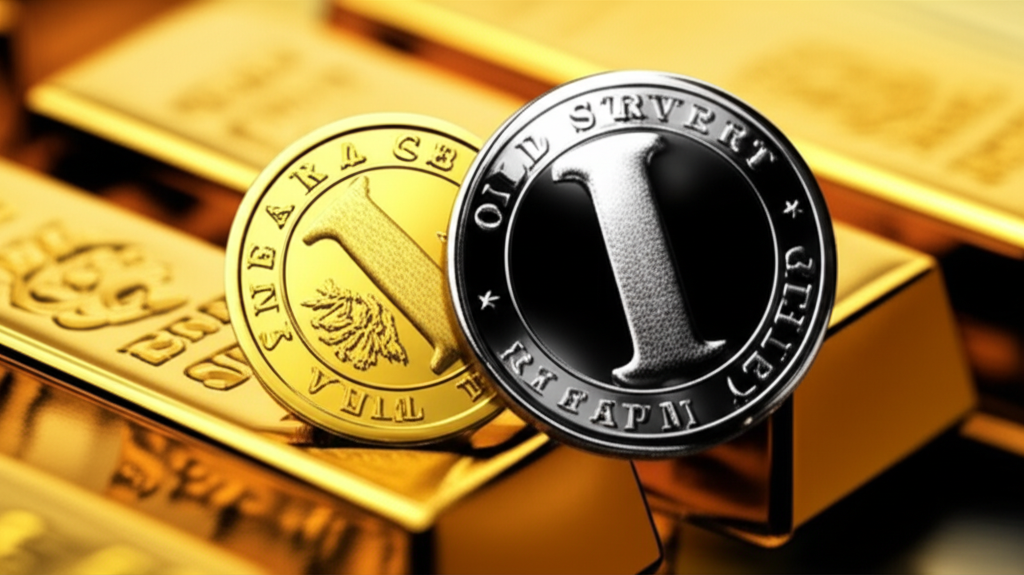Geopolitical Tensions Fuel Oil Surge, Hit Stocks, While Silver Outperforms Gold
In a world increasingly interconnected, economic stability often feels like a delicate balance, easily tipped by seismic geopolitical shifts. Recent weeks have served as a stark reminder of this reality, as escalating global tensions have sent ripples through financial markets, triggering a significant surge in oil prices, casting a shadow over equity markets, and prompting an intriguing outperformance of silver against its more celebrated precious metal counterpart, gold. For young investors navigating these turbulent waters, understanding these dynamics is crucial to making informed decisions and building resilient portfolios.
The most immediate and visible impact of heightened geopolitical friction has been on the price of crude oil. From the persistent conflict in Ukraine to the evolving situation in the Middle East and strategic competition between global powers, the specter of supply disruptions hangs heavy over energy markets. Major oil-producing regions and critical shipping lanes are often at the nexus of these geopolitical flashpoints. Any perceived threat, real or imagined, to the flow of oil from these areas or through vital chokepoints like the Strait of Hormuz or the Suez Canal, instantly adds a “risk premium” to crude prices. This isn’t just about actual supply cuts; it’s also about market sentiment and the fear of future scarcity. Higher oil prices translate directly into increased costs for transportation, manufacturing, and a vast array of goods and services, acting as a potent inflationary force that impacts economies worldwide. For consumers, this means more expensive gas at the pump and higher prices for everyday essentials, squeezing household budgets.
This inflationary pressure, largely driven by energy costs, inevitably casts a pall over global stock markets. When businesses face higher operating expenses due to expensive oil, their profit margins tend to shrink. Industries reliant on energy, such as airlines, logistics, and heavy manufacturing, are particularly vulnerable. Furthermore, central banks, grappling with persistent inflation, are often compelled to adopt tighter monetary policies, which typically involve raising interest rates. While designed to cool inflation, higher interest rates increase borrowing costs for companies and consumers alike, potentially slowing economic growth and making future earnings less attractive, thus dampening investor enthusiasm for equities. The cumulative effect is a broad sell-off across various sectors as investors seek safer havens or simply reduce their exposure to risk. Technology stocks, often sensitive to interest rate fluctuations due to their growth-oriented valuations, can be particularly susceptible to downturns in such environments. The general uncertainty fostered by geopolitical instability also leads to a “flight to quality,” where investors pull capital out of riskier assets like stocks and funnel it into traditionally safer options, contributing to market declines.
Amidst this broader market turmoil, an interesting narrative has unfolded in the precious metals space: silver has notably outperformed gold. Historically, both gold and silver are considered safe-haven assets, attracting investors during times of economic or political instability. Gold, in particular, is the quintessential hedge against inflation and uncertainty, often rising when traditional currencies or equities falter. However, silver possesses a dual nature that sets it apart. While it shares gold’s appeal as an investment and store of value, a significant portion of its demand also comes from industrial applications. Silver is a critical component in various high-growth sectors, including solar panels, electric vehicles, electronics, and medical devices. In a climate where there’s a strong global push towards renewable energy and technological advancement, this industrial demand for silver remains robust, even as general economic sentiment weakens. When coupled with its investment demand during times of uncertainty, this industrial backbone can provide silver with a unique edge. Furthermore, the gold-to-silver ratiowhich indicates how many ounces of silver it takes to buy one ounce of goldoften fluctuates. When silver outperforms, this ratio decreases, suggesting that silver’s perceived value relative to gold is increasing, possibly indicating a belief in its greater upside potential or undervaluation.
Navigating these complex market dynamics requires a keen eye and a balanced perspective. The interconnectedness of geopolitical events, commodity prices, and equity performance underscores the need for investors, especially young adults building their financial foundations, to understand the macro environment. While market volatility can be unsettling, it also presents opportunities for those who can discern long-term trends from short-term noise. Diversification, thorough research, and a clear understanding of one’s risk tolerance remain paramount in an unpredictable world where global headlines can swiftly translate into shifts in portfolio value.
—





